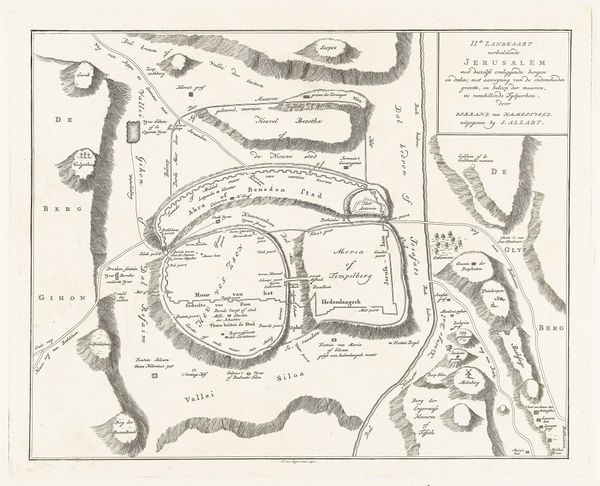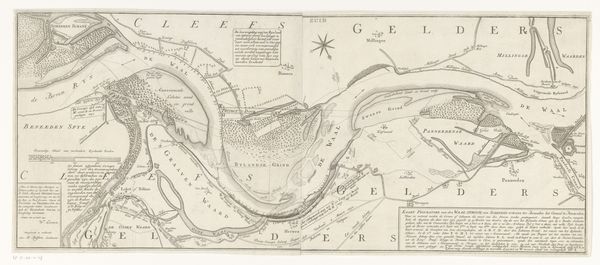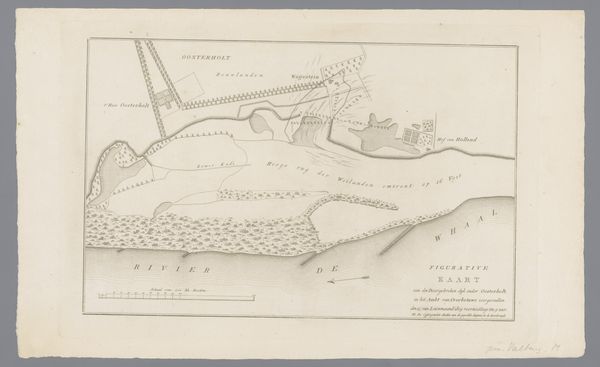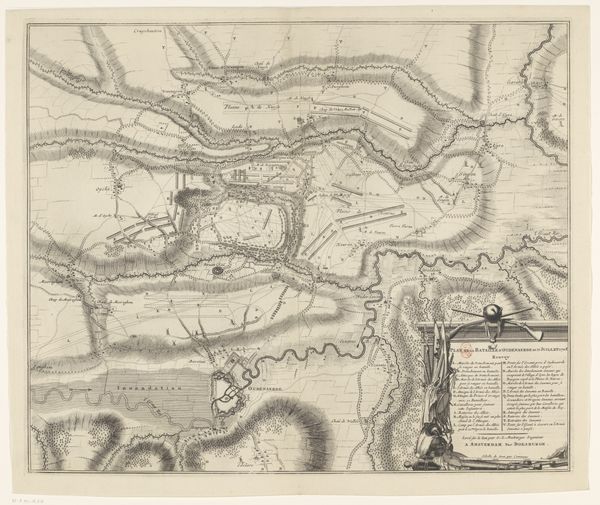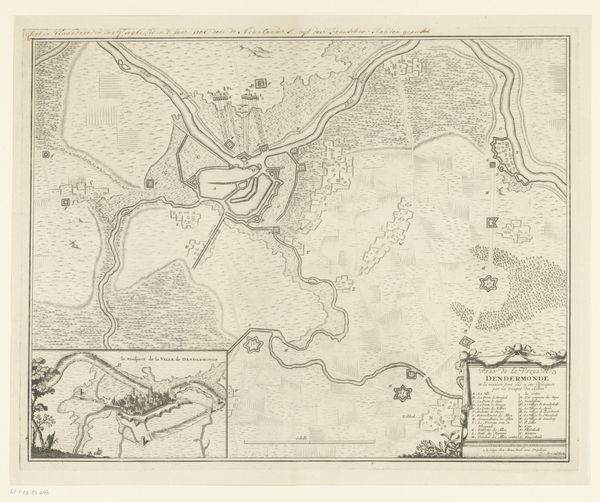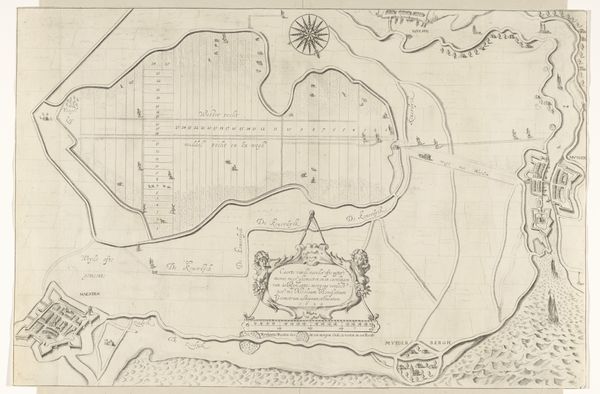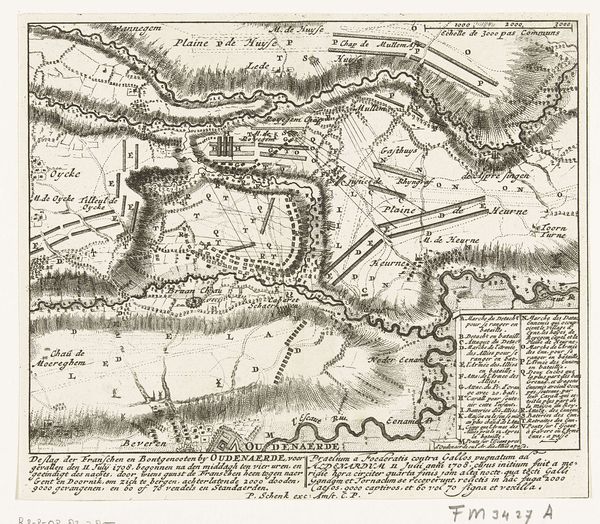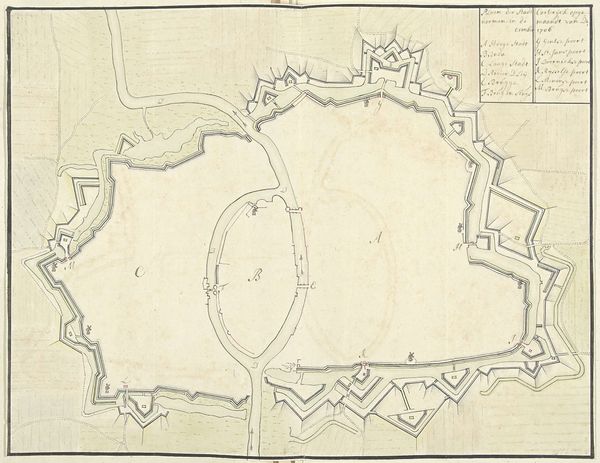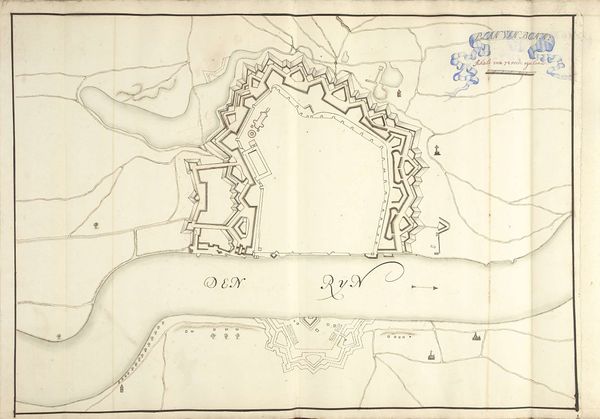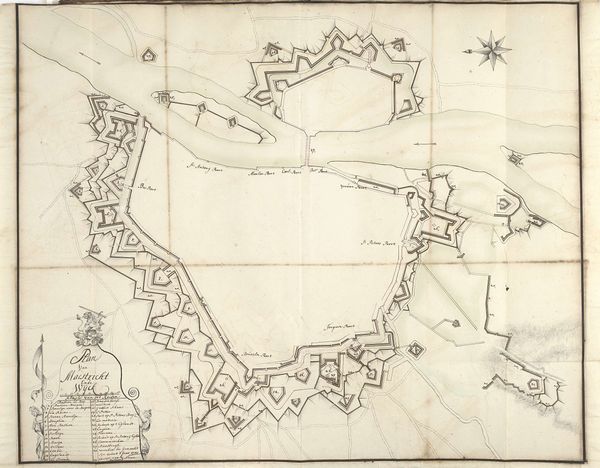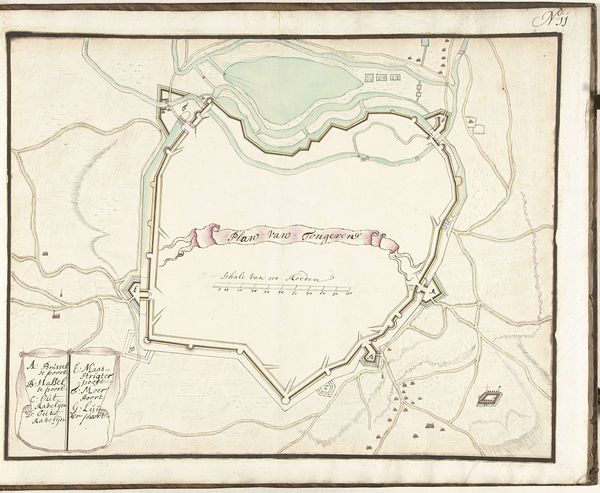
print, engraving
# print
#
geometric
#
line
#
cityscape
#
history-painting
#
academic-art
#
engraving
#
modernism
Dimensions: height 227 mm, width 352 mm
Copyright: Rijks Museum: Open Domain
Curator: This is "Kaart van beleg van Mainz door de Duitse legers, 1793," or, "Map of the Siege of Mainz by the German Armies, 1793." It’s an engraving that meticulously charts the military operation. Editor: It feels very cold and calculated. The linework is precise, almost sterile. It reminds me that warfare is, at its core, an exercise in logistical planning and control, rather than the heroic narrative we often get fed. Curator: Precisely. Maps like these were vital tools. Consider Mainz's strategic importance; it was a highly coveted area due to its placement on the Rhine. You see, printed maps standardized geographical knowledge, disseminating tactical information across military circles during the late 18th century. Editor: And what strikes me is who gets centered in this ‘knowledge.’ It's not the people of Mainz, huddled within those walls. This map isn’t for them. It’s a document of power, of imposing order and asserting dominance. It lays bare the strategy that dictates who gets to live or die, from a detached, God’s eye view. Curator: Absolutely. Think about how academic art principles are applied even here, lending an air of authority and objectivity to what is ultimately a partisan depiction of power. It reflects the broader dynamic of the French Revolutionary Wars and how territories changed hands amidst widespread political upheavals. Editor: It's easy to overlook that this siege, and documents like these, devastated everyday people and places. Maps like these also dehumanize the experiences of war—abstracting real violence, the terror of invasion and conquest, into tidy geometric shapes and lines. This reminds us to remember who isn't at the table, literally or figuratively, when decisions about the world are being made. Curator: Indeed. Examining this through a wider social lens reveals how deeply knowledge production itself can be embedded in power dynamics and used in the shaping of history's course. Editor: This work’s chilling effect prompts me to be critical about where such “objective” perspectives come from, and more vigilant about their far-reaching and lasting effects.
Comments
No comments
Be the first to comment and join the conversation on the ultimate creative platform.
